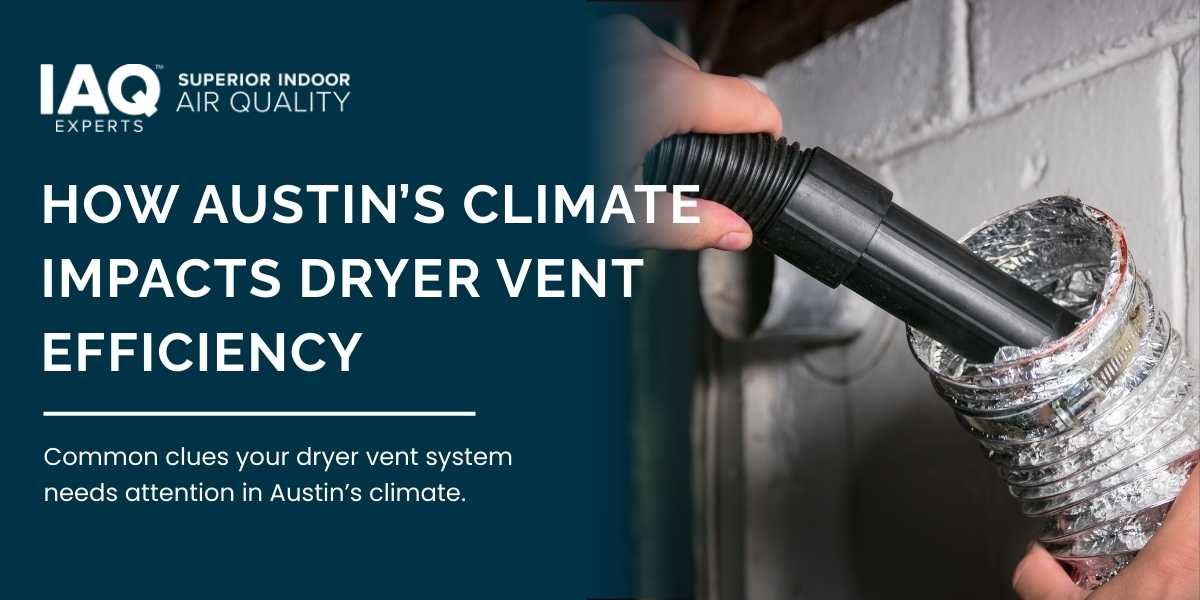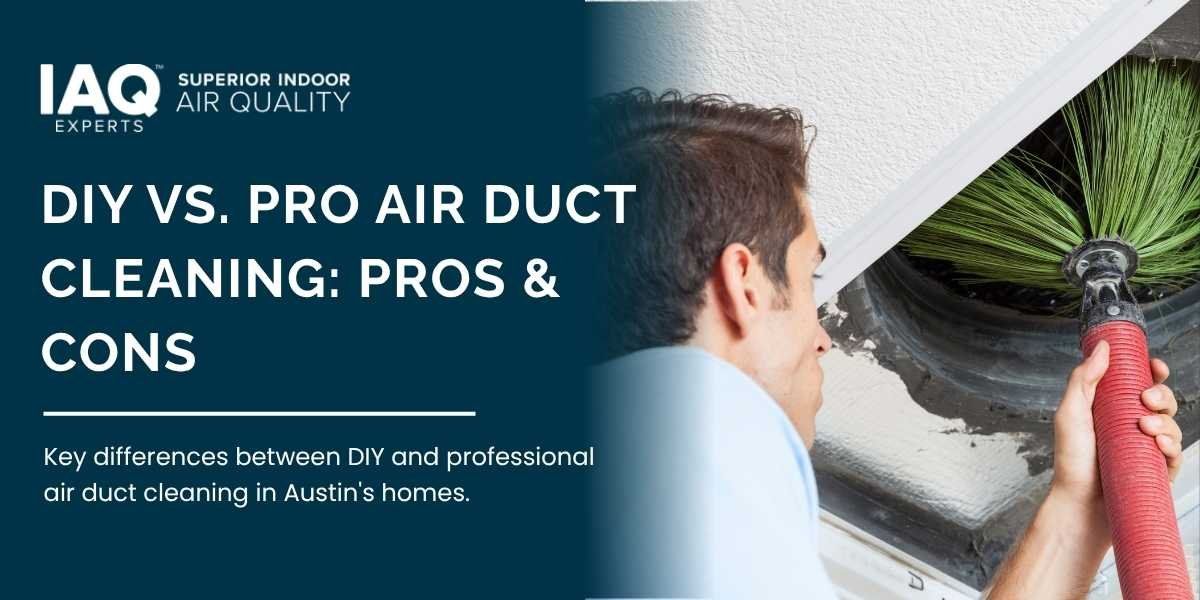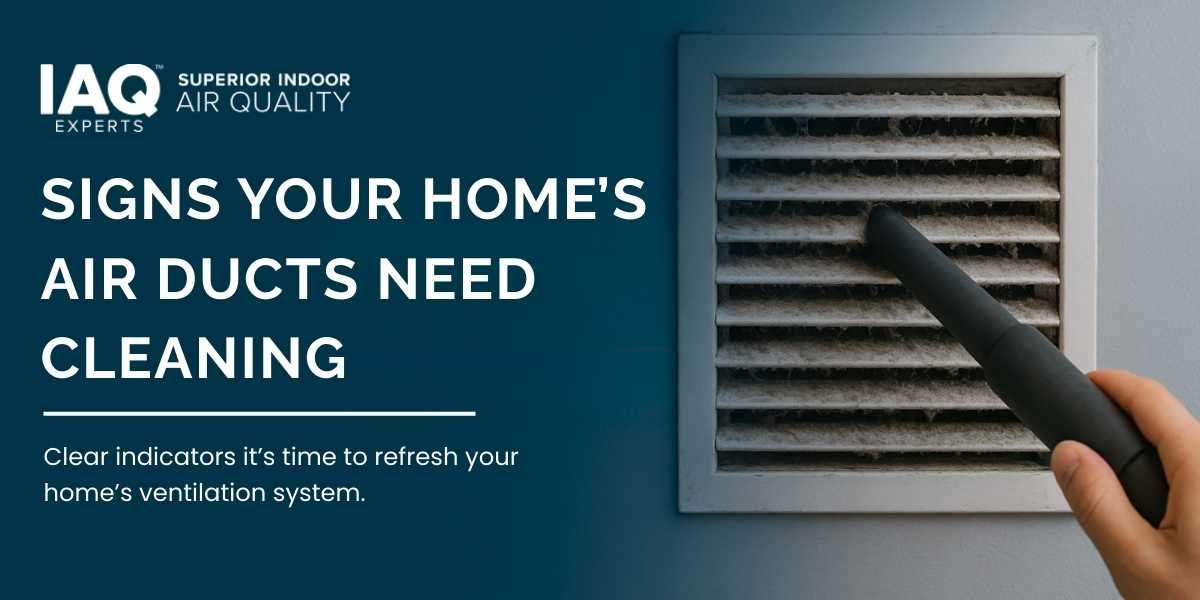If you live in Austin, you already know the climate can be unpredictable. Summers bring intense heat, spring and fall come with high humidity, and winter arrives with cedar pollen that covers everything in sight. While most people think about how this affects their allergies or energy bills, few realize that it also impacts how quickly dryer vents clog.
This is not just about inconvenience. According to the U.S. Fire Administration, clothes dryers cause nearly 2,900 fires each year, leading to $35 million in property damage nationwide. The leading cause is lint buildup, and Austin’s climate creates the perfect conditions for it to happen more quickly.
Why Austin’s Climate Speeds Up Clogs
Several local factors combine to make dryer vents in Central Texas clog faster than in many other parts of the country.
1. High Humidity
Moisture is a big issue in Austin, especially during late spring and summer. Humid air makes lint clump together, sticking inside the vent instead of flowing out. Over time, this sticky buildup traps more lint, creating a dense blockage.
2. Dust and Fine Particles
Austin’s position near drier parts of Texas means dust often makes its way into the city. Pair that with long, dry summers, and you’ll find more fine particles in the air. These tiny bits mix with lint and add weight to the buildup inside your dryer vent.
3. Cedar Pollen and Other Allergens
Cedar pollen is infamous in Austin, peaking between December and February. If you’ve seen yellow-green dust covering cars, windows, and patio furniture, you can imagine how much of it gets pulled indoors. Once inside, these particles can settle in dryer vents, making clogs form faster.
4. Older Homes and Vent Design
Austin has plenty of charming older homes, but many were built before modern ventilation standards. Long vent runs, bends in ductwork, or outdated materials give lint and dust more places to collect, speeding up clogging even further.
Signs Your Dryer Vent May Already Be Clogged
How do you know if Austin’s climate has already taken a toll on your dryer vent? Look for these warning signs:
- Clothes take longer to dry than usual
- The dryer feels hot to the touch after one cycle
- A burning smell or musty odor during use
- Lint buildup around the vent cover outside
- Higher-than-normal energy bills
Ignoring these red flags can be risky. A clogged vent not only reduces efficiency but also raises the chance of overheating and fire.
The Real Costs of a Clogged Dryer Vent
It’s easy to underestimate how much a clogged dryer vent can affect your home. Here’s what Austin homeowners should know:
- Fire risk: Lint is highly flammable. Combined with Austin’s dry summers, that risk gets even higher.
- Energy waste: A clogged dryer vent can make your appliance use 30% more energy, which means higher bills in a city where electricity use is already high in summer.
- Wear and tear: Running your dryer longer than necessary shortens its lifespan, leading to repairs or replacement sooner than expected.
- Indoor air quality: Dust and allergens trapped in vents can get recirculated, which isn’t good news for allergy-prone Austinites.
How Homeowners Can Stay Ahead of the Problem
Thankfully, there are simple steps you can take to reduce the risks:
- Clean the lint filter after every load. This may sound basic, but it’s your first line of defense.
- Check the outside vent cover regularly. Make sure air is flowing freely and no lint is visible.
- Keep indoor humidity under control. Using dehumidifiers or running your AC efficiently can help reduce moisture that makes lint stick.
- Schedule regular dryer vent cleaning. For most households, once a year is recommended, but in Austin’s climate, many experts suggest cleaning every 6–9 months.
Final Thoughts
Austin’s unique mix of heat, humidity, dust, and allergens makes dryer vent clogs happen faster than you might expect. What feels like a minor inconvenience can quickly turn into a safety hazard or an expensive repair. Staying proactive with regular maintenance is the smartest move you can make.
If you also want to understand how your entire HVAC system is affected, check out our detailed guide on air duct cleaning. It’s packed with tips every Austin homeowner should know.
For peace of mind and a safer, more efficient home, reach out to IAQ Austin – Air Duct Cleaning for a professional dryer vent inspection and cleaning. This simple step can save money, extend the life of your dryer, and most importantly, keep your family safe.



